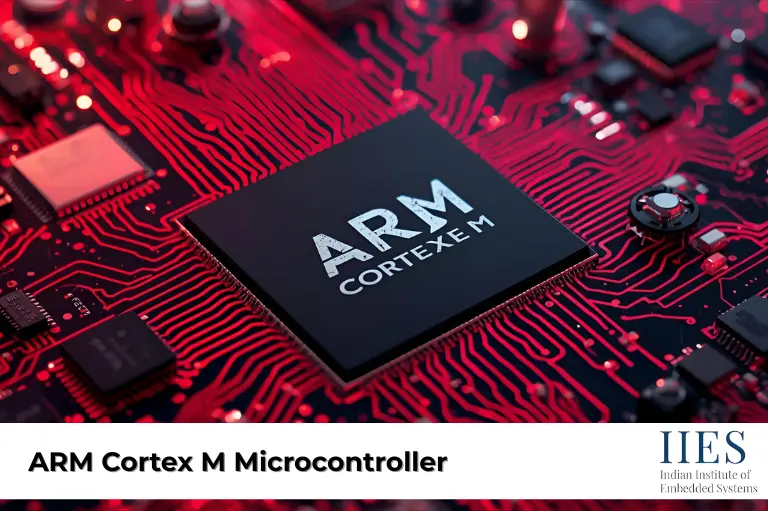
The ARM Cortex-M microcontrollers power many devices we use daily — from smart appliances to wearable gadgets. They are known for low power use, reliable performance, and affordability. This guide will help you understand the basics, programming, features, and applications of Cortex-M
ARM Cortex microcontrollers are 32-bit processors designed for embedded systems and IoT devices. They deliver high performance, low power use, and cost efficiency, making them a top choice for engineers, students, and electronics enthusiasts.
ARM Cortex processors belong to the ARM family of 32-bit microcontrollers built for efficient performance in embedded systems. They are widely used in electronics because they balance power, cost, and reliability.
These qualities make them a go-to option for developers building smart devices, automation systems, and consumer electronics.
The Arm Cortex-M architecture is designed to balance performance and energy efficiency. It includes important features like a pipeline, memory protection, and interrupt handling that make it ideal for embedded and IoT projects.
Compared to AVR or PIC microcontrollers, ARM microcontroller technology offers:
Programming lets you instruct the hardware to perform tasks. With Cortex-M, it’s beginner-friendly if you use the right tools.
Pro Tip: Start with simple LED blinking programs before moving to sensors and IoT applications.
ARM provides official documentation, guides, and software tools to help learners and professionals. These resources make it easy to explore processor features, learn coding, and develop practical projects.
You can find these on the ARM Official Website under Products → Processors → Cortex-M.
Cortex-M microcontrollers are widely used in wearables, smart home devices, automotive systems, and industrial automation. Their low power use and flexibility make them suitable for both simple and complex projects.
ARM Cortex M4 processor and other models are built around key parts like registers, pipeline, memory system, and interrupts. Each component works together to ensure fast execution and reliable performance.
The operating cycle of ARM Cortex M3 and ARM Cortex M7 processors follows five steps:
This cycle ensures smooth, fast performance in real-time systems.
For students and professionals, learning ARM Cortex M33 or ARM Cortex M0 means gaining skills highly valued in embedded systems, IoT, and electronics industries.

ARM Cortex-M4 microcontrollers are powerful, affordable, and energy-efficient, making them perfect for students, hobbyists, and engineers. From IoT devices to industrial systems, they provide endless possibilities. Learning Cortex-M is a smart step toward building a strong career in embedded systems.
A. ARM Cortex-M microcontrollers are used in IoT devices, embedded systems, wearables, consumer electronics, and industrial automation due to their low power and high performance.
A. Devices like smartwatches, fitness trackers, smart home appliances, medical devices, and industrial robots commonly run on ARM Cortex-M processors.
Yes, ARM Cortex-M is widely used in IoT and embedded projects because of its scalability, energy efficiency, and strong developer support.
Yes, beginners can start programming ARM Cortex-M microcontrollers using development boards, IDEs like Keil or VS Code, and tutorials provided by ARM.
Yes, ARM Cortex-M processors are optimized for low power consumption, making them ideal for battery-powered devices such as wearables and IoT sensors
Developers choose ARM Cortex-M for its energy efficiency, affordability, scalability, and robust ecosystem, which make it more versatile than many other microcontrollers
Indian Institute of Embedded Systems – IIES